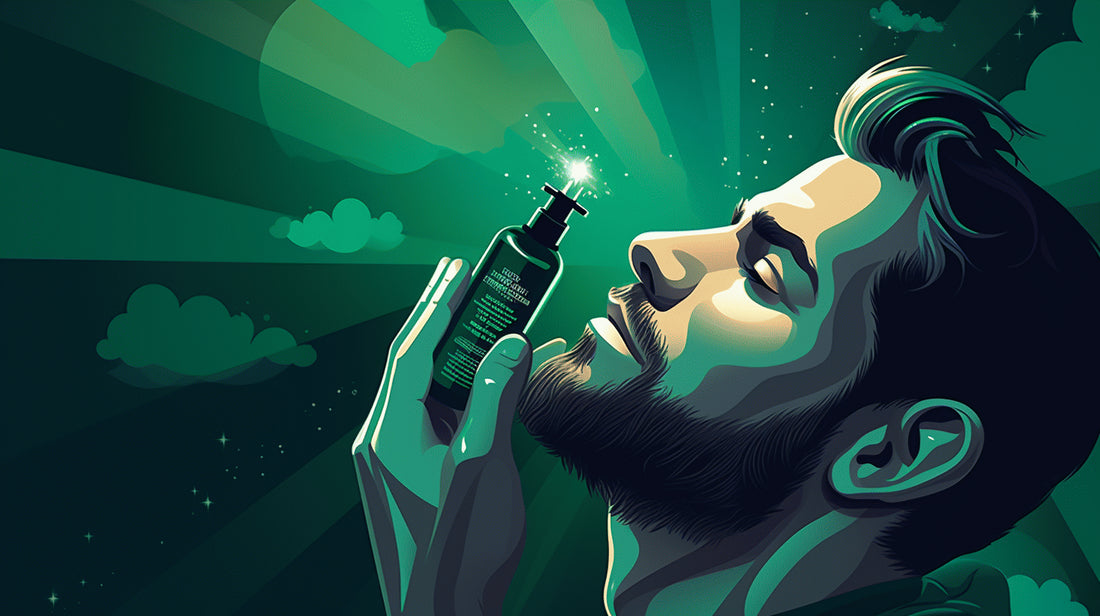For many, shaving is a routine part of personal grooming. Yet, no matter if they're newbies or seasoned veterans in the world of razors, everyone can relate to the unpleasant experiences of shaving rash, razor bumps, or even the dreaded ingrown hairs. These irritations can transform a simple self-care task into an uncomfortable ordeal, leaving one feeling more prickly than pampered. In this guide, we will delve deep into the topic of shaving irritations and explore effective solutions to alleviate these pesky problems. We aim to provide a comprehensive breakdown of what exactly shaving rash and razor bumps are, their common causes, preventive measures, and potent treatments. Are you ready to embark on a smoother shaving journey? Let's dive in!
Understanding Shaving Rash and Razor Bumps
Getting ready to face the day often involves the routine act of shaving for many people. Still, this common grooming activity can occasionally turn into an uncomfortable experience. Many have endured the unwanted after-effects of shaving, such as razor rash or bumps which blink rudely on the skin's surface, almost like traffic lights drawing attention to your face or legs. This article aims to shed some light on these annoying conditions, commonly referred to as shaving rash and razor bumps, which are a common cosmetic complaint experienced by nearly 75% of men who shave their face daily in the US.
Definition
To better understand these conditions, let's define them. Shaving rash, also known as razor burn, is an irritation of the skin caused by using a razor blade. Symptoms may include redness, itchiness, and swelling. On the other hand, razor bumps, scientifically known as Pseudofolliculitis barbae (PFB), are small, irritated bumps on the skin that appear after shaving. They are caused by strands of hair curling back on themselves, growing back into the skin. They might be red and inflamed, and can sometimes be mistaken for acne.
Common Causes
Identifying the causes can be the first step towards prevention. These post-shave nuisances may emerge due to several reasons such as:
- Poor shaving technique: This typically involves applying too much pressure, shaving too quickly, or using a dull or dirty razor.
- Lack of skin preparation: Failing to sufficiently wet the skin and hair before shaving can exacerbate the issue.
- Shaving against the grain: While you might get a closer shave, it also increases the chance of razor burn and bumps.
- Not moisturizing after shaving: Applying moisturizer post-shave can keep your skin hydrated and minimize irritation.
Knowing and understanding the causes of shaving rash and razor bumps can help take decisive and effective steps towards prevention and treatment. This includes adopting impeccable shaving techniques, proper skin preparation, or even over-the-counter relief in the form of a hydrocortisone cream. Remember, smooth, bump-free skin is achievable; sometimes, it just takes a little more care in your daily grooming routine.
Preventive Measures for Shaving Rash and Razor Bumps
Shaving rash and razor bumps can be a tormenting consequence of your grooming routine if not addressed promptly. Did you know with some minor adjustments in your shaving routine, you can say goodbye to these side effects? Let's delve into the techniques to prevent shaving rash and razor bumps and make your shave smoother and more pleasant.
Proper Shaving Technique
The way you shave plays a pivotal role in preventing razor burn and bumps. A few changes in your shaving methods can lead to significantly positive outcomes in skin health:
- Shave less often: Shaving often can irritate the skin, leading to razor bumps. Allowing some time between shaves can give your skin a chance to heal.
- Use of astringents: Implementing astringents like witch hazel before and after a shave can tighten and tone the skin, resulting in a reduction of bumps significantly.
- Exfoliation is vital: Exfoliating the skin before shaving can aid in the removal of dead skin cells, allowing for a smoother, more seamless shave while reducing the chances of razor burn.
Benefit of Using Moisturizers and Conditioners
Integrating moisturizers and conditioners in your shaving regimen can also work wonders in preventing skin irritation. Here's why:
- Lubrication: Using shaving cream or gel before taking the razor to your skin assists in providing the much-needed lubrication. This helps in preventing irritation and reducing the chances of rash and bumps.
- Hydration: Good quality products will not only prepare your skin for the shave but also nourish it by hydration, leading to a smoother and healthier skin texture after shaving.
Importance of Clean and Sharp Razor Blades
A dull blade might seem like the lesser of two evils, but it can actually cause more harm than a sharp one. Here are the reasons you should always use clean and sharp razor blades:
- Smooth shave: Sharp blades provide a cleaner and smoother shave, preventing the formation of razor bumps.
- Less irritation: With a sharp blade, the need for extra pressure is eliminated, hence reducing the chances of skin irritation.
- Prevention of infection: A clean razor ensures no bacteria buildup, thus reducing the chances of post-shave infections.
Care after Shaving
The care you take of your skin after shaving is just as imperative as the care during the shave. Here is what you should do:
- Moisturize: After-shave gels, lotions or balms soothe the skin, reducing the chances of dryness and flakiness post-shaving.
- Avoiding tight clothes: Avoid wearing tight clothing immediately after shaving. Tight garments can cause friction, leading to skin irritation and, consequently, razor bumps.
Your skin deserves the best. By implementing these preventive measures, you can ward off shaving rash and razor bumps, keeping your skin smooth and radiant. Remember, a well-executed shaving routine isn't just about aesthetics; it's about maintaining healthy skin too.
Treatments for Shaving Rashes and Razor Bumps
Shaving rashes and razor bumps can steal away the joy associated with a clean shave. They're not just a minor inconvenience; they can become painful, cause distress, and inhibit comfort. But fret not, because we have got your back - or rather, face - with successful treatments for these shaving complications.
Topical Treatments
One of the best ways to treat shaving rashes and razor bumps is by leveraging the power of topical treatments. Application of salicylic acid has proven highly effective in reducing inflammation as well as preventing infection in the damaged areas, paving the way for a smoother recovery. Additionally, light brushing of the skin and applying a warm washcloth can alleviate discomfort and loosen the in-grown hairs. However, it's worth noting that while topical treatments provide prompt relief, it may take anywhere between 4 to 6 weeks to see their full effects.
Avoid Shaving and Treat Skin
Sometimes, the best form of treatment can boil down to just steering clear of the razor. If the irritation is severe enough, it might be best to follow this path and avoid shaving for 3 to 4 weeks until all lesions have subsided. Taking a shaving break is not only vital to let your skin heal naturally but also allows you to focus more on treating the skin. A combination of skin-friendly oils, balms, and moisturizers promotes skin recovery, ensuring that when you return to your shaving routine, your skin is healthier and less prone to irritation.
New Technologies
When it comes to shaving and skin care, technology is your friend. Brands like Gillette have introduced revolutionary technologies designed to nip razor irritation in the bud for individuals with sensitive skin. These new technology-enabled products promise not only a smoother shave but also help prevent razor bumps and burns. They transform the act of shaving from a risky encounter with potential injury into one that prioritizes skin health, effectively marrying innovation and personal grooming.
In essence, managing shaving rashes and razor bumps doesn't have to be hard. Whether you opt for topical treatments, take a shaving hiatus, or incorporate technology into your grooming routine, there's always a feasible solution to get you back to enjoying the freshness of a clean, smooth shave.
Here is a list of the top 5 razors for sensitive skin for a painless shaving experience.
Preventing and Treating Ingrown Hairs
Having a polished, smooth shave can often feel wonderful, especially if it leaves your skin feeling soft and rejuvenated! But, occasionally, that newfound smoothness can take an undesirable turn, leading to the development of uncomfortable, irritating ingrown hairs. This common but often pesky condition occurs when a hair curls back or grows sideways into the skin, resulting in inflammation, redness, and sometimes, infection. But don't worry, we've got you covered on how to prevent and treat them, keeping your skin healthy and bump-free.
Foremost, the best method to avoid the pesky issue of ingrown hairs is simply not shaving. But for those of us who choose to shave, or for whom not shaving is not an option, there are several effective techniques that you can adopt to reduce the risk of ingrown hairs developing in the first place.
- Avoid Pulling the Skin Tight during Shaving: The act of pulling the skin taut might help get those hard-to-reach hairs, but it can contribute to the likelihood of ingrown hairs. When the skin is released after shaving, the hair can recoil underneath the skin, leading it to grow back into the skin and create an ingrown hair.
- Shave in the Direction of Hair Growth: The direction you shave can also impact whether you get razor bumps or not. Shaving in the direction that your hair naturally grows helps to minimize the risk. When you shave against the grain, the hair is cut at a sharper angle, making it easier for the hair to reenter the skin.
It's essential to note that everyone's skin response and hair growth pattern are different, so it can be beneficial to pay attention to how your body responds to different shaving techniques. By knowing your body better, you can settle on the best preventative measures that work consistently for you.
The complications of ingrown hairs are not just an unsightly inconvenience but may lead to discoloration of the skin, scarring, and skin infection. Preventing ingrown hairs is far more manageable than treating them. Nevertheless, if you find yourself grappling with this condition, it's crucial to treat it appropriately to avoid any lasting damage to your skin. Treatment may include warm compresses, topical creams, or, in severe cases, a visit to a dermatologist. Taking proper care of your skin, understanding appropriate shaving methods, and treating any ingrown hairs properly will leave your skin looking and feeling its best.
Conclusion
Battling with shaving rash and razor bumps can often feel like an uphill struggle, but it doesn't have to be. With a proper understanding of their causes, implementing preventive measures, and by choosing the most suitable treatments, you can achieve a smooth and rash-free shave.
Consider incorporating products like those offered by Bart's Balm into your routine. Their high-quality aftershave and pre-shave balms, coupled with a variety of Eau De Parfums are handmade in Scotland, providing desirable levels of performance, value, and unique scents. With over 25 years of experience under their belt, they are trusted by customers globally who swear by the effectiveness of their products.
Remember, consistency is key in achieving optimal results. So, stick with good practices and soon, you will notice significant improvements. Here's to a future of irritation-free, comfortable, and satisfying shaves! Stay fresh, stay smooth.
Frequently Asked Questions
-
What causes shaving rash?
Shaving rash is primarily caused by irritation and inflammation of the skin, often due to improper shaving techniques, dull blades, or using harsh shaving products.
-
How can I prevent shaving rash?
To prevent shaving rash, make sure to use a sharp and clean razor, shave in the direction of hair growth, use a lubricating shaving cream or gel, moisturize your skin regularly, and avoid applying excessive pressure while shaving.
-
What are some effective home remedies for treating shaving rash?
Some effective home remedies for treating shaving rash include applying aloe vera gel, cold compresses, tea tree oil, witch hazel, cucumber slices, or a mixture of honey and yogurt to soothe the irritated skin.
-
Are there any over-the-counter products that can help in treating shaving rash?
Yes, there are various over-the-counter products available, such as hydrocortisone creams, moisturizers containing ingredients like aloe vera or chamomile, and antiseptic creams that can provide relief and promote healing for shaving rash.
-
When should I see a doctor for shaving rash?
You should consider seeing a doctor if the shaving rash persists for more than a week, becomes more severe, or is accompanied by symptoms like pus-filled blisters, severe pain, or signs of infection.






